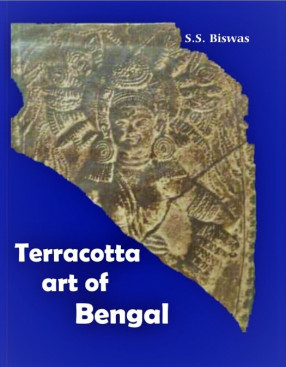Terracotta Art of Bengal
A significant feature of the archaeological explorations and excavations carried out over different parts of Bengal has been the discovery of numerous artifacts made of terracotta. These antiquities have opened a new horizen in the study of the traditions of plastic art of this region. These have also been found to reveal very deep and positive reflex of the nature and personality of the people for whom these were made and hence can be considered as valuable documents for understanding the socio-cultural upbringing of the people express- ed in terms of the way of their life for which there hardly exists any other document worthy of consideration. In view of this, the art of terracotta may well be held as the only media through which to make a contact with those long forgotten epochs of human movements over Ocenturies for which we have virtually no other source to work upon. Although this fact has been emphasized from time to time, a detailed study of the terracotta art of Bengal has not so far been undertaken in a really serious vein. An effort had consequently been made, as will be understood from the following pages, to develop a comprehensive survey of this form of art and this had eventually earned a Ph.D. Degree for the author from the University of Calcutta in 1978. The work has later been thoroughly revised and enlarged in order to bring out a full scale and lively account of the art forms as such and the life and society of the contemporary days as revealed through these creations.
In this study particular notice has been taken to understand the basis of visualization and the aesthetics of the terracottas in their archaeological background. The first two chapters in the work have been devoted to the study of the background and the different centres from where the terracotta artifacts have been found. The next two deal with the art forms and the creative features of the objects under study taking into consideration all archaeological discoveries made upto recent times stressing upon the early history and civilization in Bengal. Here also have been underlined the aesthetic qualities as revealed through the technique and style, delineation and modelling of the art and the dissemination of forms and characters of the types evolved over wide areas and long periods of time. In the fifth chapter attempt has been made to bring out the social outcome of the relevant epoch as would be visualized through the medium of these objects. The sixth brings about the conclusion.
In writing this book no pain had been spared in collecting materials from all known archaeological and literary sources. Terracottas lying scattered in different museums and private collections have been examined, classified, analysed, evaluated and compared with similar artifacts found from various other places in India. Effort has also been made to substantiate each and every observation made in course of this study through copious illustrations which form an essential part of this publication. The terracottas illustrated here are selected with considerable discrimination keeping in view their aesthetic quality, diversity of forms, significance of character and the social contents that have made them so fascinating.
Get it now and save 10%
BECOME A MEMBER








Bibliographic information